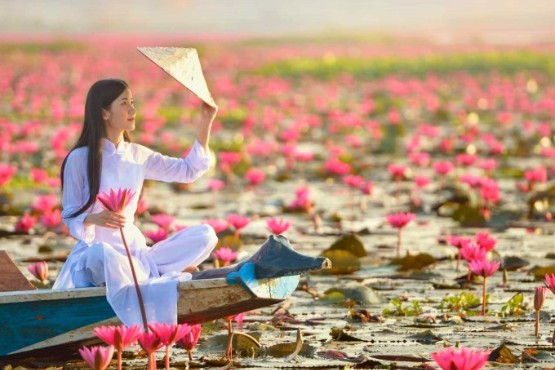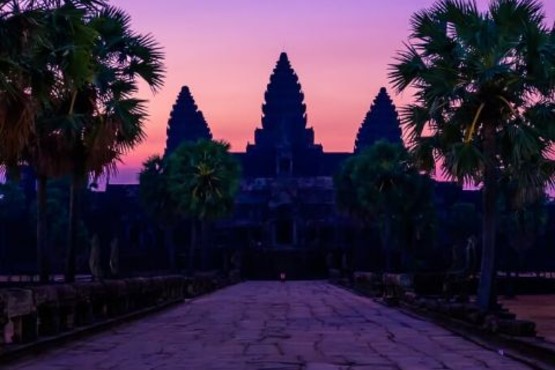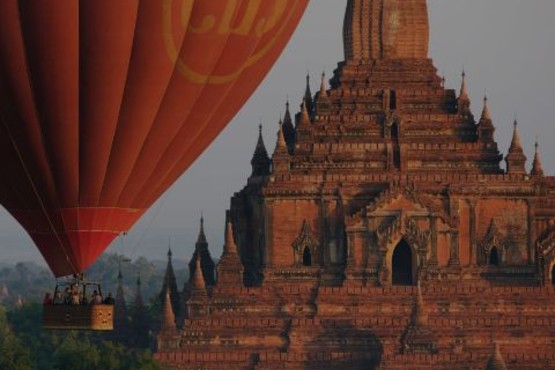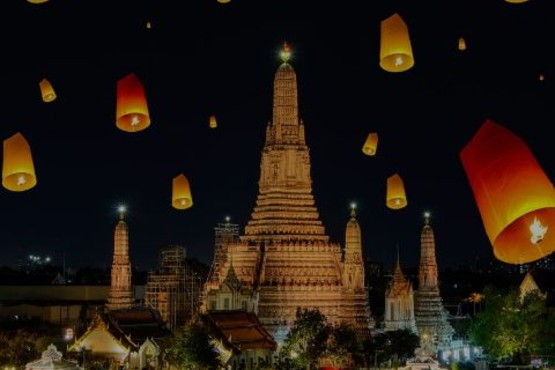Are you eager to the trip to Cambodia’s capital Phnom Penh? You already know a lot about Phnom Penh tourist destinations to plan a detailed visit yet? Let check out the most attractive places in this city for a perfect vacation.
Once known as the “Pearl of Asia” Phnom Penh was built at the confluence of the Mekong, Tonle Sap, and Bassac rivers. The Kingdom of Cambodia’s up and down past, including once a French colony has a strong influence on Phnom Penh today, Phnom Penh is an enchanting old-new fusion spot.
If you are able to set foot on this land, do not miss to explore 10 famous tourist destinations in Phnom Penh below.
1. Royal Palace
The outstanding of Phnom Penh is the beautiful Royal Palace – the seat and residence of Cambodia’s royal family since the 1860s. Here is also the place where Cambodian rituals and diplomatic meetings take place. The Royal Palace is adjacent to the Silver Pagoda, extending for 174,870 square meters. The whole building is solidly built, including spired-roof pavilions – a typical Khmer architecture. The whole construction is separated from the outer road by a wall with a series of sculptures. Both the Throne Hall area and the Silver Pagoda – set within manicured gardens – are open to the public for visiting.
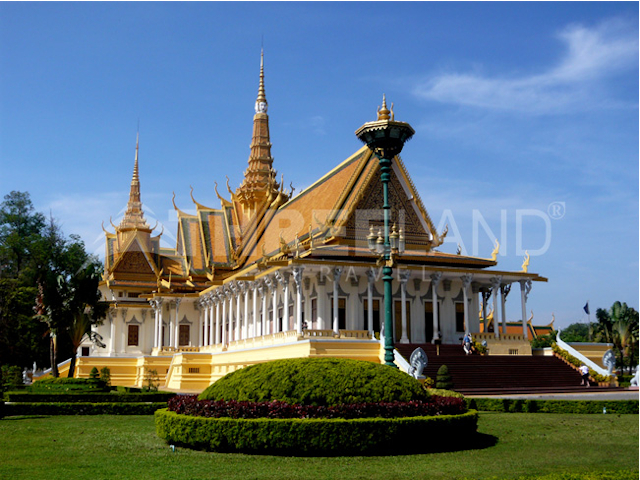
Located to the right of the Royal Palace, the Silver Pagoda is also known as Wat Preah Morakat or the Temple of the Emerald Buddha originally built of wood in 1866, was expanded in 1962 by King Sihanouk. Silver Pagoda has many National treasures. The most highlight is the Emerald Buddha statue and a mammoth 90-kilogram Gold Buddha statue studded with 9584 diamonds.
Open daily (except some celebrations of big ceremonies as announced one day before) start from 8:00 am to 11:00 am and from 2:00 pm to 5:00 pm and ticket stops to sell 30 minutes before the close of each time.
2. The National Museum
The National Museum of Cambodia is home to the archaeological, religious, and artistic artifacts of the Khmer that dates back to the 4th century. The museum was built in 1917-1920 during the French colonial period. Therefore, the main architecture of the museum has a blend of two architectures: France and Cambodia. This is also a distinctive attraction of the National Museum from other famous architectural works in Cambodia.

Inside, the dazzling array of ancient Khmer artistry displays more than 1,800 objects is a must-visit for anyone with an interest in Cambodian history. The main outstanding in galleries is the Vishnu head excavated near the vast temple complex of Angkor Wat; the incredible Angkorian collection, with statues from the temples of Koh Ker and Angkor Thom; the large exhibit of pre-Angkorian artifacts that trace Cambodia’s Funan and Chenla periods.
In addition to its priceless value of artifacts, the museum itself is a unique and splendid architectural work that visitors should not miss. The entrance ticket is $10 / person, the opening time from 8 am to 5 pm, stop selling at 4:00 pm.
3. Tuol Sleng Genocide Museum
Tuol Sleng Genocide Museum is a museum chronicling the Khmer Rouge genocide museum during its reign from 1975 to 1979. It used to be a high school before it was turned into an interrogation, torture, and execution center by the Khmer Rouge genocide regime. Also known as the S21 prison, it holds about 17,000 people of which about 7 succeeded in escaping and survive until the end of the regime.
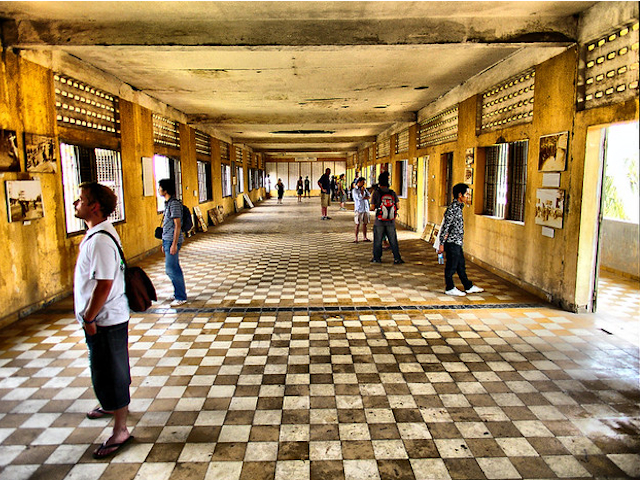
The prison kept a lot of documents, thousands of photos of the victims, many of which are still on display. The visiting experience is made even more visceral by the displayed vivid photos and pictures of that period, pictures depicting prisoners being tortured, the fields of death ragged with bones of the people who were killed by the Khmer Rouge. The museum’s entrance is on the western side of 113 St just north of 350 St, and it is open daily from 8:00 am to 5:00 pm; entry is $5 per person.
4. Cheung Ek (The Killing Fields)
The Killing Fields, also known as Cheung Ek Memorial, is a bone-chilling reminder of Cambodia’s tragic history. In the center of The Killing Fields, there is a memorial to the ill-fated victims, inside are about 8,000 skulls, arranged by sex, are visible behind the clear glass panels of the Memorial Stupa.
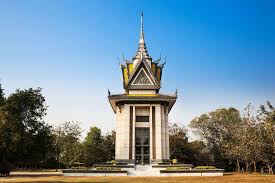
An estimated one to three million Cambodians were under the authoritarian command of Pol Pot in under four years. About 17,000 men, women, children, and infants (including nine westerners), detained and tortured at S-21 prison, were transported to the annihilation to avoid wasting your bullets. 8985 human remains were exhumed, many of whom were tied and blindfolded from mass graves in 1980; 43 of the 129 communal graves here have been intact.
Open: Daily from 8:00 am to 5.00 pm with entry $3 per person.
5. Wat Phnom
Wat Phnom is located on a hill north of the capital Phnom Penh, considered one of the ancient temples in the country of pagodas. Set on top of a tree-covered knoll 27m high, it is the highest point in this city. The first religious building on this spot is thought to have been constructed in the 14th century and the temple was restored and reconstructed over several years, namely in 1434, 1806, 1894, and 1926. Sacred Wat Phnom is a symbol of the Cambodian capital and is regularly visited by local devotees who either come for prayers or participate in meditation.
Open: Daily from 8:00 am to 5.00 pm with entry USD1 per person.
6. Independence monument (Vimean Ekareach)
This eye-catching construction is an important highlight in the city center, built in the Angkorian style, different from any other building in the city. It was built in 1958 and inaugurated in 1962 during the regime of Sangkum Reastr to Cambodian Independence Day after winning back their independence from the French protectorate on the 9th of November 1953.
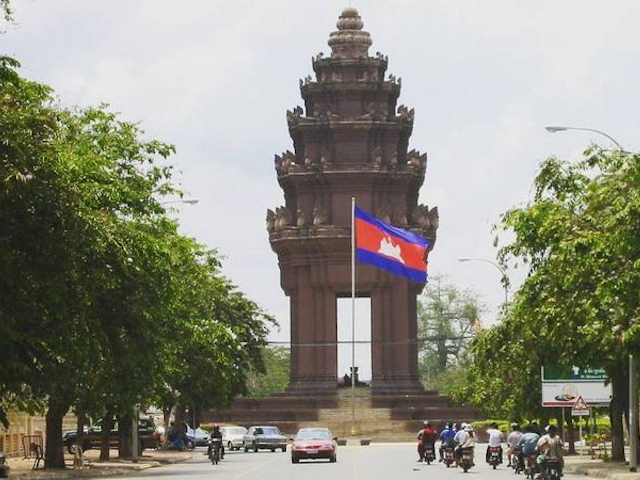
The monument appeals to many tourists because its unique style distinguishes it from all the buildings in the city. At night, as well its surroundings including the fountain are illuminated by blue, red, and white floodlights – the colors that embody the Cambodian flag. Every year, Independence Monument becomes the place of celebrations and services on holidays such as Independence Day and Constitution Day, falling on 9th November and 24th September respectively.
7. Mekong Sunset River cruise
The 1-hour sunset cruise on the Mekong River Phnom Penh will be the best way to end the Phnom Penh tour. Your boat will ride on the Tonle Sap river – Southeast Asia’s largest natural lake. From here you will also have a view of the sunset that covers the whole of Phnom Penh city, which is very attractive. If you looking an offer a range of boat trips, including buffet dinner and entertainment, Tara Boats and Kanika come recommended
8. Local Markets
Central Market (Phsar Thmey): Designed by French architects Jean Desbois and Wladimir Kandaouroff, this indoor market was the largest of its kind in Asia when it was constructed in 1937. Central Market displays numerous goods from men’s and women’s clothing, jewelry, flowers, and shoes to gemstones, local handicrafts, and fresh produce.
Russian Market (Toul Tom Poung): is the most famous market among tourists and expats and probably the ideal place to buy souvenirs. It does not look like much from the outside but when you get in you will find everything from beautifully hand-carved statues, colorful lanterns, and handmade silk scarves to fake bags printed T-shirts, and DVDs. The name “Russian market” comes from the fact that it used to be a popular market among the Russian expats during the 1980s when most of the western expats in Phnom Penh were Russian.
9. Mekong Island (Koh Dach)
Mekong Island is an ideal attraction for those who want to take a break from the hustle and bustle of Phnom Penh and venture into a world of peace and tranquility. Bounded by views of rice paddies, vegetable farms, and fruit orchards, Mekong Island also enables you to experience the country’s authentic culture at its best.
Besides this, it’s also one of the prominent centers of traditional handicrafts in Cambodia, with artisans engaged in silk weaving, pottery, woodcarving, and dyeing in its villages. The best way to reach this Island, you should get there by boat cruise from Phnom Penh as upon arrival, you can hire Tuk Tuk or bicycle to explore this Island as a round trip spend around 2.5 hours to 3 hours or you can get there by car as well.
10. Oudong Mountain
About 40 km northwest of Phnom Penh along Highway 5, a mountain topped with stupas from the plain resembles a fairy-tale castle. This is Phnom Oudong, which was once a capital city between the years 1618 and 1866. There are three names for this hill: Phnom Udong, Phnom Preah Reach Troap and Phnom Edthareus.
The site includes the peaks of five hills: Chetdei, Trai Treung, Chetdei Kampul Buon, Preah Ang Chol Nipean and Ariya Kasaks. Chetdy Peaks and Trai Treung are the same height. The area of Phnom Udong is approximately 1.500meters x 700 meters from east to west. The ancient capital Oudong is said to have a highland with much beautiful scenery, especially at sunset. Besides, there are also architectural works built solidly, great, and very majestic.
Each famous tourist attraction in Phnom Penh has its own charm and attractiveness to explore. Hopefully, this article will help you to plan a memorable trip. Don’t forget to check out our regularly updated traveling blog for holidayss to Cambodia with more valuable content and check our Cambodia tours available here.
Our team is always available at sales@stravel.com.vn or phone numbers at (+84) 984731343

